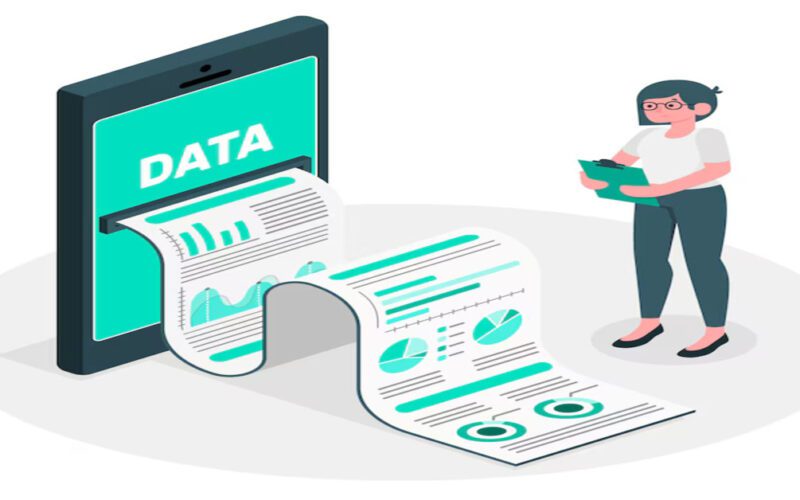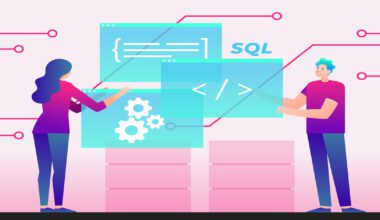Summary: Data annotation is crucial for training Machine Learning models by adding meaningful labels to raw data. This blog covers the importance, types, techniques, best practices, and challenges, highlighting its role in enhancing AI accuracy and decision-making across various industries.
Introduction
Data annotation is the process of adding meaningful labels, tags, or metadata to raw data to provide context and structure for Machine Learning algorithms.
This process is crucial for training AI models to accurately interpret and classify various types of data, such as images, text, audio, and video.
By annotating data, we enable machines to comprehend patterns, make predictions, and derive insights that drive innovation across numerous industries.
The Importance of Data Annotation
It is essential in the realm of Artificial Intelligence and Machine Learning. It lays the groundwork for training models, ensuring accuracy, and facilitating supervised learning. By providing context and structure, annotated data enables machines to learn effectively and make informed decisions.
Training Machine Learning Models
Data annotation is the foundation upon which Machine Learning models are built. By providing labelled examples, annotated data enables algorithms to learn patterns, make predictions, and solve complex problems. Without annotated data, Machine Learning models would struggle to generalise to new, unseen data.
Ensuring Accuracy and Quality
High-quality annotations are essential for training accurate and reliable Machine Learning models. Consistent and accurate annotations help ensure that the training data is of the highest standard, directly impacting the performance and reliability of the models. Quality control in annotation is vital for successful outcomes.
Facilitating Supervised Learning
Supervised learning, one of the most widely used approaches in Machine Learning, relies heavily on annotated data. Labelled data serves as the ground truth, guiding the learning process and enabling the model to generalise to new situations. This approach enhances the model’s predictive capabilities.
Enabling Model Interpretability
Annotated data not only helps train Machine Learning models but also plays a crucial role in interpreting their decisions. By understanding how the model was trained and the data it was exposed to, we can gain insights into its decision-making process, making it more transparent and trustworthy.
Types of Data Annotation
Data annotation can be applied to various types of data, each with its own unique challenges and best practices. Understanding the different types of data annotation is essential for selecting the appropriate method for your specific use case, whether it’s text, images, audio, or video.
Text Annotation
Text annotation involves labelling or tagging textual data to provide context and meaning. This can include tasks such as named entity recognition, part-of-speech tagging, and sentiment analysis. Text annotation is crucial for Natural Language Processing (NLP) applications, enabling machines to understand and interpret human language.
Image Annotation
Image annotation is the process of adding labels, bounding boxes, or segmentation masks to specific objects or regions within an image. This type of annotation is crucial for computer vision tasks such as object detection, image classification, and semantic segmentation, allowing machines to interpret visual data accurately.
Audio Annotation
Audio annotation involves labelling audio data with timestamps and descriptive tags. This is essential for tasks like speech recognition, sound event detection, and audio classification. Annotating audio data helps machines understand spoken language and identify specific sounds, enhancing their ability to process auditory information.
Video Annotation
Video annotation combines elements of image and audio annotation, with the added complexity of dealing with temporal data. This type of annotation is used for object tracking, action recognition, and video classification, enabling machines to analyse and interpret dynamic visual content effectively.
Data Annotation Techniques
Data annotation can be performed using various techniques, each with its own advantages and drawbacks. Selecting the right annotation technique is crucial for achieving high-quality results while balancing efficiency and cost.
Manual Annotation
Manual annotation involves human annotators manually labelling data. This approach ensures high-quality annotations but can be time-consuming and costly, especially for large datasets. Manual annotation is often preferred for complex tasks requiring human judgement and expertise.
Semi-Automated Annotation
Semi-automated annotation combines human input with Machine Learning algorithms to streamline the annotation process. Pre-trained models can suggest annotations, which are then verified and refined by human annotators. This approach balances efficiency and accuracy, making it suitable for large-scale projects.
Automated Annotation
Automated annotation relies entirely on Machine Learning algorithms to generate annotations without human intervention. While this approach is highly scalable, it may not always achieve the same level of accuracy as manual or semi-automated annotation, especially for complex or ambiguous data.
Crowdsourcing
Crowdsourcing involves distributing annotation tasks to a large number of people, often through online platforms. This approach can be cost-effective and scalable but may require additional quality control measures to ensure consistency and accuracy. Crowdsourcing is particularly useful for large datasets.
Data Annotation Best Practices
To ensure high-quality annotations and efficient workflows, it’s essential to follow best practices. Implementing these practices can significantly enhance the quality and reliability of your annotated data, ultimately leading to better-performing Machine Learning models.
Establish Clear Guidelines
Provide annotators with comprehensive instructions, examples, and reference materials to ensure consistent and accurate annotations. Clear guidelines help reduce ambiguity and improve the overall quality of the annotations.
Employ Multiple Annotators
Use consensus-based annotation techniques and engage multiple annotators to reduce subjectivity, bias, and errors. This practice enhances the reliability of the annotations and ensures a more accurate representation of the data.
Provide Annotator Training and Feedback
Offer ongoing training, support, and feedback to annotators to address questions, concerns, and improve annotation quality. Continuous training helps annotators stay updated on best practices and enhances their skills.
Optimise the Annotation Process
Balance manual and automated annotation techniques to enhance efficiency, speed, and scalability without compromising quality. Streamlining the annotation process can lead to significant time and cost savings.
Maintain Data Privacy and Ethics
Ensure compliance with data privacy regulations and ethical guidelines, especially when dealing with sensitive data such as personal information or medical records.
Challenges in Data Annotation
Despite its importance, data annotation poses several challenges. Recognizing these challenges is essential for developing strategies to mitigate their impact and ensure successful annotation projects.
Annotation Quality
Ensuring consistent and accurate annotations, especially for subjective or ambiguous data, can be challenging. Implementing quality control measures can help address this issue and improve overall annotation quality.
Scalability
Annotating large datasets can be time-consuming and costly, requiring efficient workflows and tools. Developing scalable annotation processes is crucial for managing extensive data projects.
Expertise
Domain expertise is often needed to annotate data correctly, especially in specialised fields like healthcare or legal documents. Ensuring access to knowledgeable annotators is vital for achieving high-quality results.
Data Bias
Annotated data may reflect human biases, which can be propagated to Machine Learning models if not addressed. Actively working to identify and mitigate bias in annotations is essential for creating fair and unbiased AI systems.
Continuous Improvement
As Machine Learning models evolve, the annotated data used to train them must also be updated and refined to maintain performance. Establishing a process for continuous improvement is crucial for long-term success.
Conclusion
Data annotation is a critical component of modern Artificial Intelligence and Machine Learning. By providing labelled data, we enable machines to learn patterns, make predictions, and solve complex problems. As AI continues to advance, the importance of data annotation will only grow, driving innovation across various industries and transforming the way we interact with technology.
By understanding the processes, types, techniques, and best practices associated with data annotation, organisations can harness the full potential of their data and achieve remarkable outcomes in their AI initiatives.
Frequently Asked Questions
What Is Data Annotation, And Why Is It Important?
Data annotation is the process of labelling raw data to provide context and structure for Machine Learning algorithms. It is essential because it enables AI models to learn patterns, make predictions, and improve accuracy, ultimately driving innovation across various industries and enhancing decision-making processes.
What Are the Different Types of Data Annotation?
The main types of data annotation include text annotation (labelling text data), image annotation (adding labels or bounding boxes to images), audio annotation (tagging audio data), and video annotation (labelling objects or actions in videos). Each type serves specific purposes in training Machine Learning models.
What Are the Best Practices for Data Annotation?
Best practices for data annotation include establishing clear guidelines, employing multiple annotators for consensus, providing training and feedback, optimizing the annotation process, and maintaining data privacy. Following these practices ensures high-quality annotations, enhances efficiency, and supports the development of reliable Machine Learning models.




